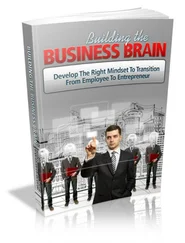Bruce Hood - The Domesticated Brain - A Pelican Introduction (Pelican Books)
Здесь есть возможность читать онлайн «Bruce Hood - The Domesticated Brain - A Pelican Introduction (Pelican Books)» весь текст электронной книги совершенно бесплатно (целиком полную версию без сокращений). В некоторых случаях можно слушать аудио, скачать через торрент в формате fb2 и присутствует краткое содержание. Год выпуска: 2014, ISBN: 2014, Издательство: Penguin Books Ltd, Жанр: Старинная литература, на английском языке. Описание произведения, (предисловие) а так же отзывы посетителей доступны на портале библиотеки ЛибКат.
- Название:The Domesticated Brain: A Pelican Introduction (Pelican Books)
- Автор:
- Издательство:Penguin Books Ltd
- Жанр:
- Год:2014
- ISBN:9780141974873
- Рейтинг книги:4 / 5. Голосов: 1
-
Избранное:Добавить в избранное
- Отзывы:
-
Ваша оценка:
- 80
- 1
- 2
- 3
- 4
- 5
The Domesticated Brain: A Pelican Introduction (Pelican Books): краткое содержание, описание и аннотация
Предлагаем к чтению аннотацию, описание, краткое содержание или предисловие (зависит от того, что написал сам автор книги «The Domesticated Brain: A Pelican Introduction (Pelican Books)»). Если вы не нашли необходимую информацию о книге — напишите в комментариях, мы постараемся отыскать её.
The Domesticated Brain: A Pelican Introduction (Pelican Books) — читать онлайн бесплатно полную книгу (весь текст) целиком
Ниже представлен текст книги, разбитый по страницам. Система сохранения места последней прочитанной страницы, позволяет с удобством читать онлайн бесплатно книгу «The Domesticated Brain: A Pelican Introduction (Pelican Books)», без необходимости каждый раз заново искать на чём Вы остановились. Поставьте закладку, и сможете в любой момент перейти на страницу, на которой закончили чтение.
Интервал:
Закладка:
This magic-trick technique, known as violation of expectancy , has spawned hundreds of experiments used to tap into the minds of infants who cannot tell us what they are thinking. Harvard psychologist Elizabeth Spelke has been using violation of expectancy to probe the rules infants apply when understanding the physical world. 10From very early on, infants recognize that solid objects do not pass through other solid objects, move from one position to another without appearing in between, move by themselves unless contacted and nor do they dissolve or fall apart when touched. When we say that something is ‘solid as a rock’, it is so because it obeys Spelke’s rules for physical objects. These rules do not have to be learned and for most objects that the child will encounter throughout the rest of their life, these principles will hold true, which is why they are referred to as core knowledge , because they are programmed into the mind from birth.
Of course, there are some exceptions to these rules, such as in the case of magnets, where an iron object will move in the absence of direct contact with another object. Soft bananas dipped in liquid nitrogen become hard as nails. These exceptions to the normal rules are enchanting because they violate our expectations of how physical objects should behave. Many toys that you find in science museums are counter-intuitive examples that amaze and amuse precisely because they do not behave like most ordinary objects.
It’s alive!
Babies appreciate that people are also another type of object, but one with a special set of properties. For a start, people can move by themselves. If an inanimate object is left behind a screen then it should still be there unless someone has moved it. A person, on the other hand, can leave the room when you are not looking, so may not necessarily remain stationary when they are out of sight. 11Also people do not have to move in a straight line. Five-month-olds who watched a video of a box sliding across a stage and passing behind two screens were surprised if it did not reappear in the gap in between. However, they were not surprised when a person moving across the same stage did not reappear in between the screens, suggesting that the infants could draw a distinction between how a box and a person can behave when moving in between screens.
Living things also move in particular ways. Objects that are not alive tend to move in a rigid way, whereas living things have ‘biological motion’ which is much more fluid and flexible. These types of movement are processed by neurons that are tuned to directions and speed in the visual area at the back of the brain known as MT . Biological motion is less rigid and activates a different region which is closer to the area behind your ears that is activated by faces. This area, the fusiform gyrus , also registers the shape of the human body, which suggests it might be a region that stores general information about others like us. 12When we think of others, we expect them to be a certain shape and move in a certain way. By six months of age, babies are surprised to see a female who appears to have arms growing out of her hips that swing as she walks. 13
How do babies decide what is human? We know that babies like to look at other people. They prefer biological motion at birth. 14We also know they prefer the sound of the human voice and their mother’s voice in particular. 15They prefer the smell of their mother compared to the smell from another mother. 16Just about every capability of the newborn’s senses seems to be tuned into their mums.
Over time, infants gradually start paying attention to others and noticing what they are doing. When you think about it, the sheer volume of information contained in just a minute or two of a typical everyday action that an adult might perform is staggering. 17Consider the individual steps involved in making a cheese sandwich. Every sequence requires complex motor skills that must be performed in a way that is beyond the capabilities of robots. Ingredients and implements must be retrieved from various locations in the kitchen and then prepared and assembled in the correct pre-planned order. There is no point trying to butter the slice of bread after the cheese has been inserted. How do babies begin to make sense of what they see when watching others? It turns out that in just the same way that baby brains are wired to chop language up into different segments, they are programmed to observe and learn different actions. Infants as young as six months are sensitive to the statistical regularities in action sequences and by ten to twelve months readily segment complex actions up into their constituent parts based on the flow of movements as they start and stop. 18
So babies are the consummate people persons – they love to watch others. People are the most interesting objects to babies not only because they look and move in a particular way in complex action sequences but because they interact with them. Synchrony is critically important to establishing social interactions and babies are on the lookout for those who are tuned into them. As adults, we instinctively engage in these synchronized activities, often mimicking the baby in an attempt to capture their affections. Two-month-old infants will even treat non-living objects that act contingently as if they are alive and smile at them. 19As they build up their models of what it is to be human, they are looking for evidence for those things that are most likely to be important for their survival and becoming increasingly more sophisticated in their decisions.
Thinking objects
Babies rely on faces, biological movement and contingent interaction to draw up a list of credentials that make something worth paying attention to. Any one of these attributes may signal that something is worth watching because they are starting to draw a distinction between the living and non-living world in terms of agency. Non-living things move because some force has acted upon them, whereas agents act independently for a purpose – they have goals. They have choices. When we understand that something has goals, we see it as intentional. We do this all the time with animals and our pets, when we give them human qualities using a cognitive bias called anthropomorphism , but we will even extend such ‘humanness’ to things that are clearly not alive, let alone possessed of minds.
Imagine three geometric shapes moving around a screen. A large triangle attacks a smaller triangle by banging into it and then corners a small circle inside a rectangular box. The circle moves around frantically inside the box as if trapped. The smaller triangle distracts the large triangle, allowing the circle to escape, and then closes the opening to the box, trapping the large triangle inside. The small triangle and circle rotate around each other in joy and then exit the screen. The large triangle proceeds to break up the box in a fit of rage. Hardly the script of a Hollywood blockbuster, but observers interpret this sequence as some sort of domestic dispute. 20
This simple animation made by psychologists Fritz Heider and Marianne Simmel in 1944 demonstrates that humans anthropomorphize moving shapes that appear to be goal directed and generate rich interpretations consistent with social relationships. The philosopher Dan Dennett thinks that we adopt an intentional stance as a strategy to first look out for things that could be agents that could have consequences for us and then give them intentions. 21When something has a face, moves as if alive or behaves in a purposeful way, we think that it has a mind that may have intentions directed towards us.
Attributing agency is something that babies also do from very early on. Based on the Heider and Simmel animation, infant psychologist Val Kuhlmeier showed infants a cartoon geometric red sphere, appearing to climb up a steep hill, that kept faltering and slipping down the slope. 22At one point, a green pyramid shape comes along and pushes the sphere up the slope until it reaches the top. To most of us, this seems to be a case where the pyramid has helped the sphere up the slope. In a second scene, the red sphere is again trying to climb up the hill but this time along comes a yellow cube that blocks the path and then pushes the sphere down the slope. The cube has hindered the sphere. Even though these are simple animations of geometric shapes, we readily see them as intentional agents. A sphere that wants to climb a hill, a pyramid that wants to help and a cube that wants to hinder.
Читать дальшеИнтервал:
Закладка:
Похожие книги на «The Domesticated Brain: A Pelican Introduction (Pelican Books)»
Представляем Вашему вниманию похожие книги на «The Domesticated Brain: A Pelican Introduction (Pelican Books)» списком для выбора. Мы отобрали схожую по названию и смыслу литературу в надежде предоставить читателям больше вариантов отыскать новые, интересные, ещё непрочитанные произведения.
Обсуждение, отзывы о книге «The Domesticated Brain: A Pelican Introduction (Pelican Books)» и просто собственные мнения читателей. Оставьте ваши комментарии, напишите, что Вы думаете о произведении, его смысле или главных героях. Укажите что конкретно понравилось, а что нет, и почему Вы так считаете.











